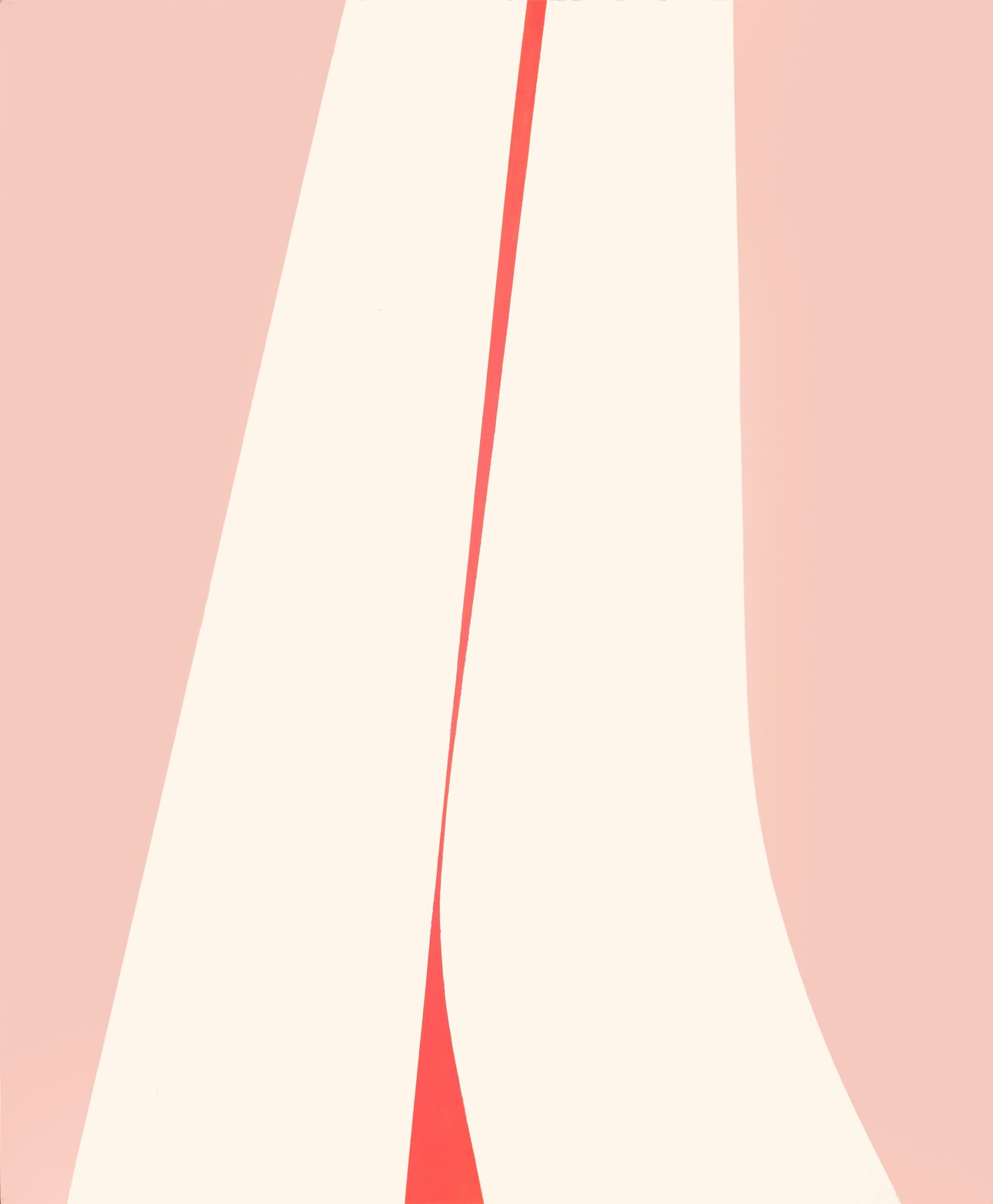These are things, and yet they are becoming living things. Not in the sense that they’re from Mars and so on. The forms coming towards us are what I call the inexplicable. But in these pictures here, I was playing with these objects that have presence for me. But the word that I’m using now is ambiguity…But also it was magical, in the mood. I was then concerned with what I called the magical, that which I can never explain. – Lorser Feitelson
Trained as an artist in New York and Paris, Lorser Feitelson moved to Los Angeles in 1927, inspired by the surrealist works and early abstractions he saw during his studies. As a teacher and gallery owner, he played an important role in forming Los Angeles into an art center. From the 1940–60s, Feitelson created a series of Hard Edge abstractions he called Magical Space Forms. In many of these works, Feitelson seems to be capturing the close-up moment of two shapes connecting in space, with the tension between the forms, the delicate line work, and vivid colors coming together to form something fleeting. These minimalist paintings from the 1960s and 70s make the most of simple variations in a line’s thickness, curvature, and color. Feitelson’s work can be found in numerous collections, including the SFMoMA, San Francisco; LACMA, Los Angeles; The Phillips Collection, Washington, DC; and the Whitney Museum, New York.

